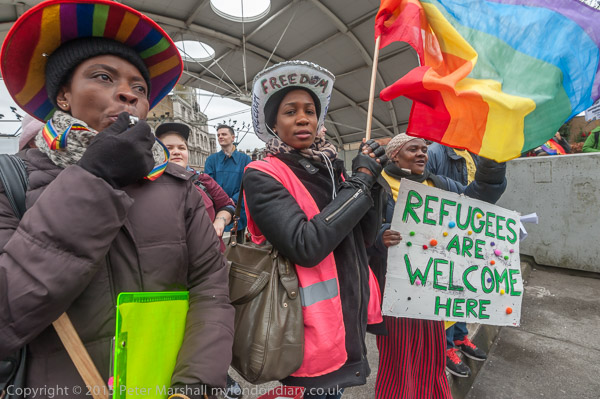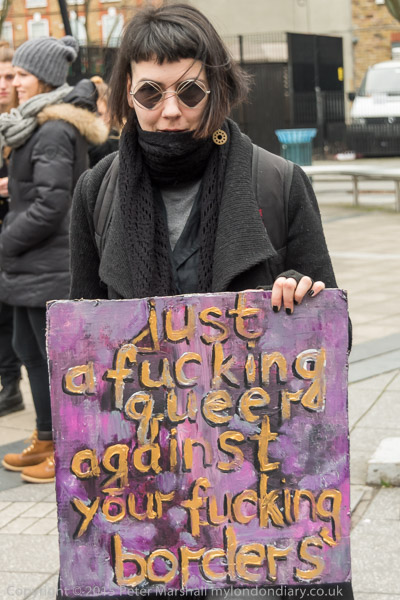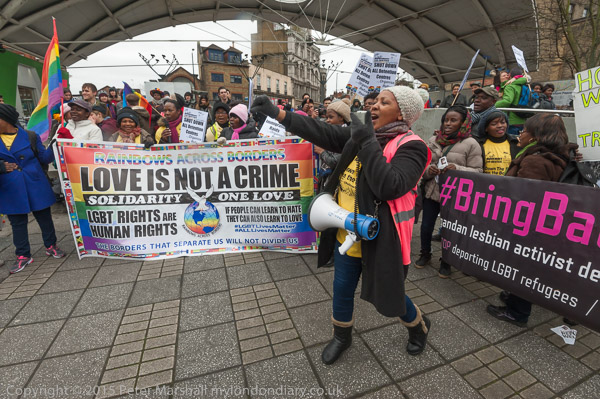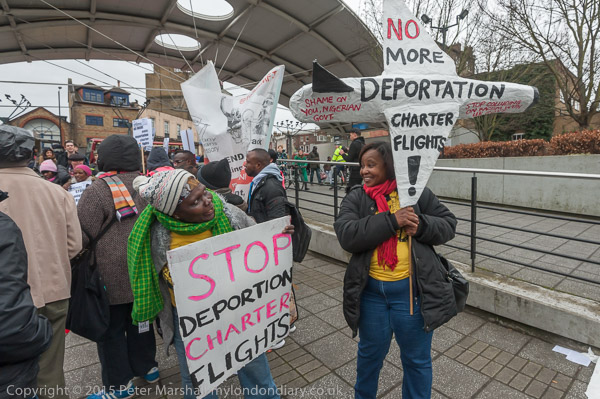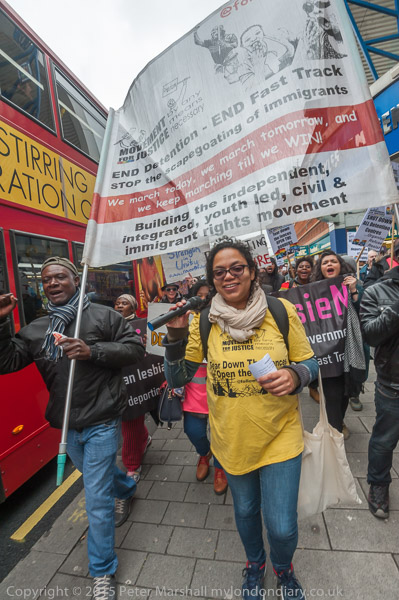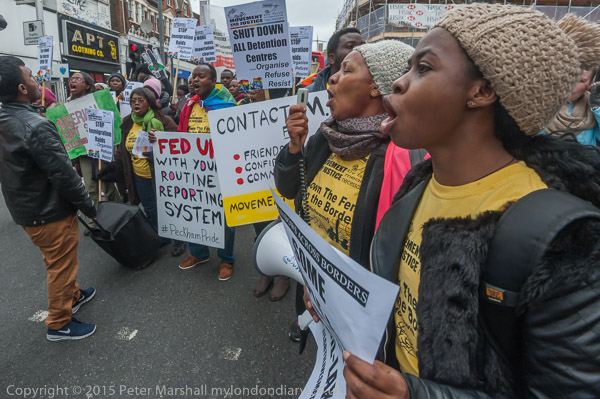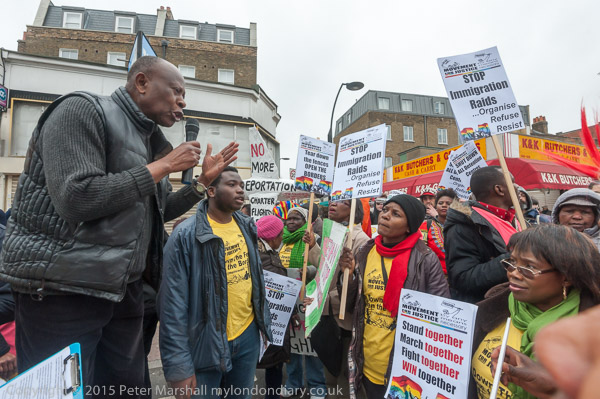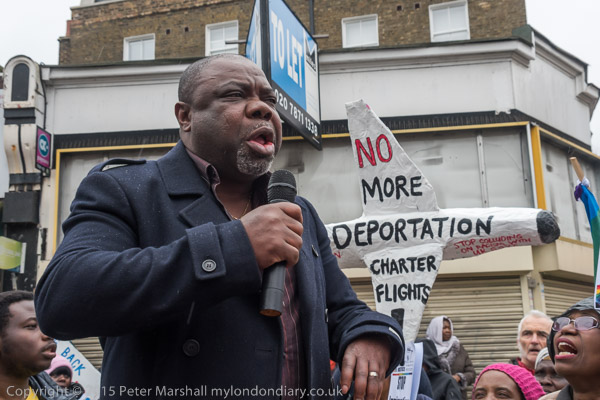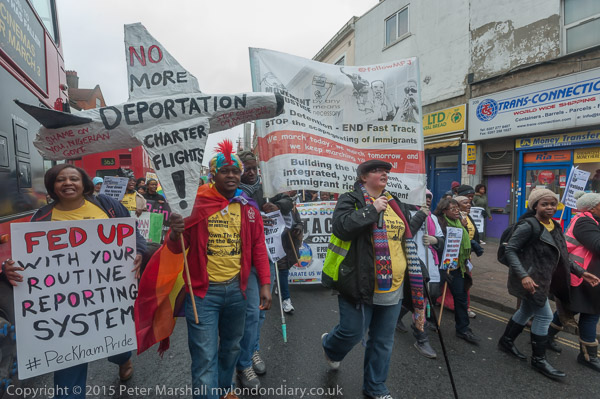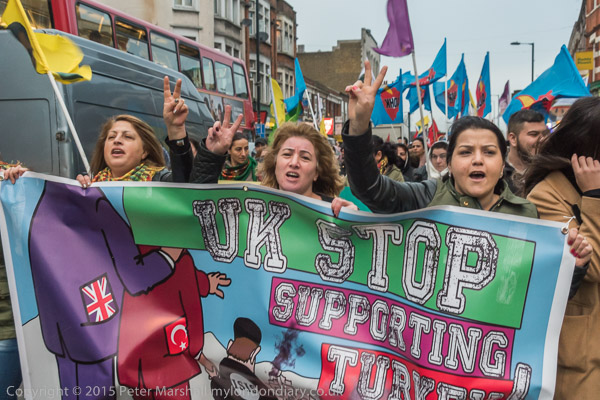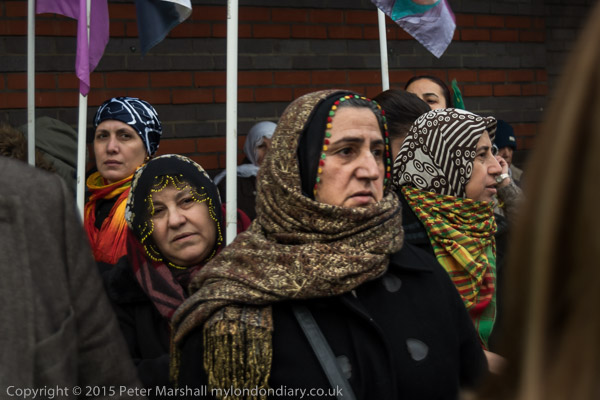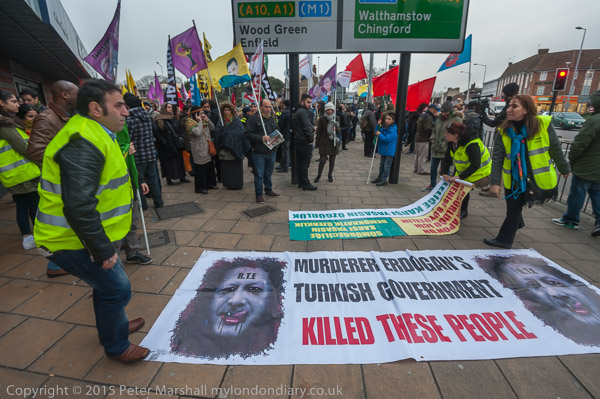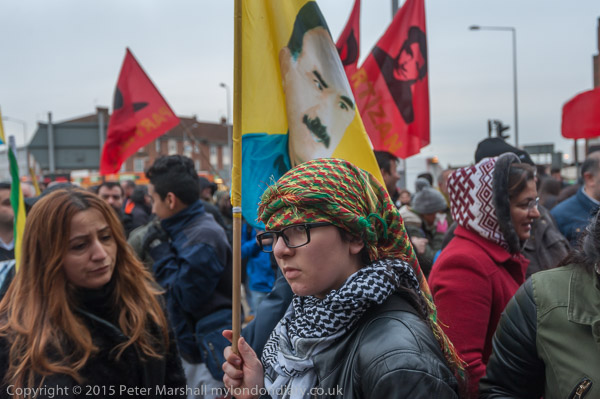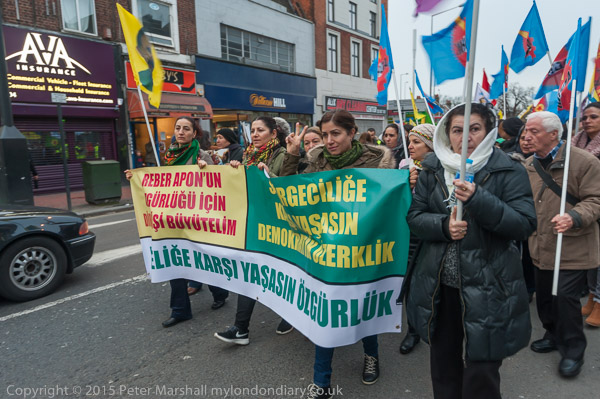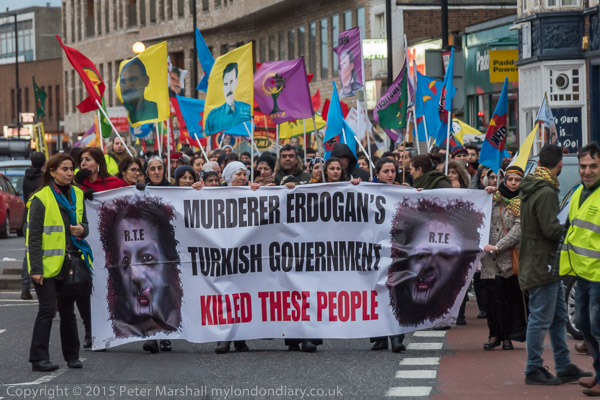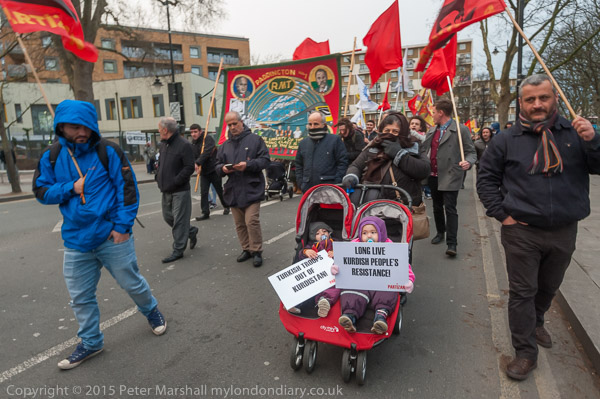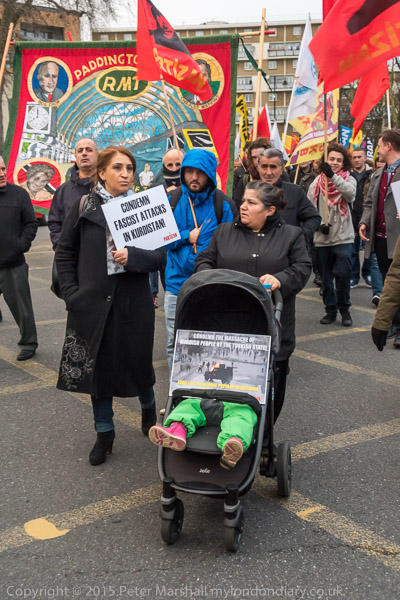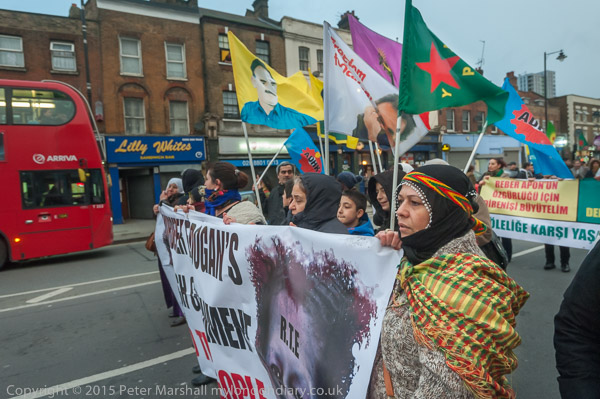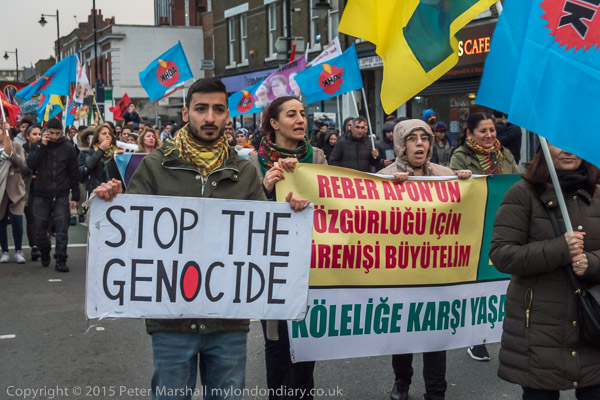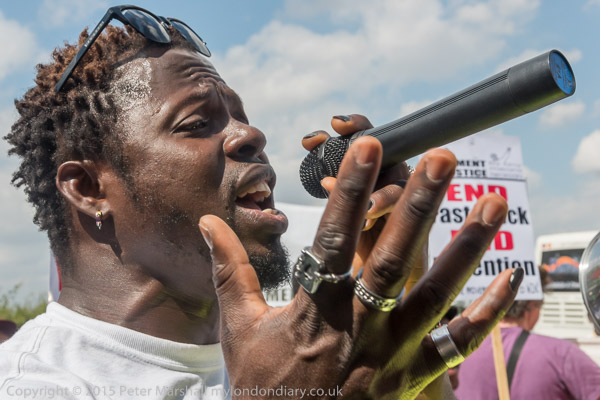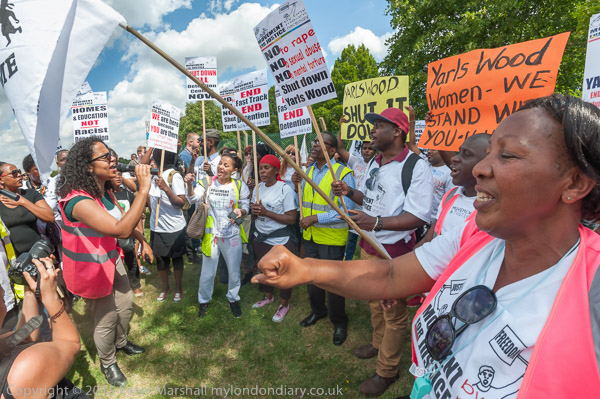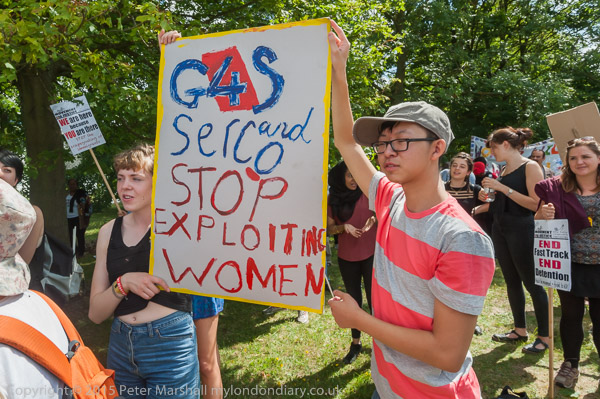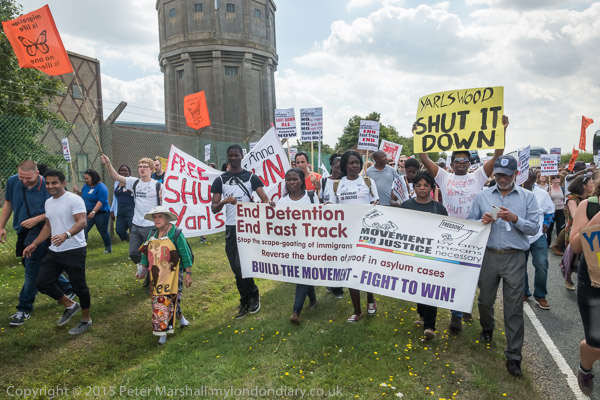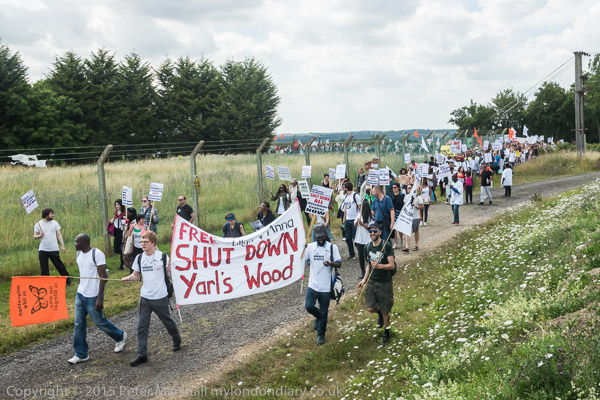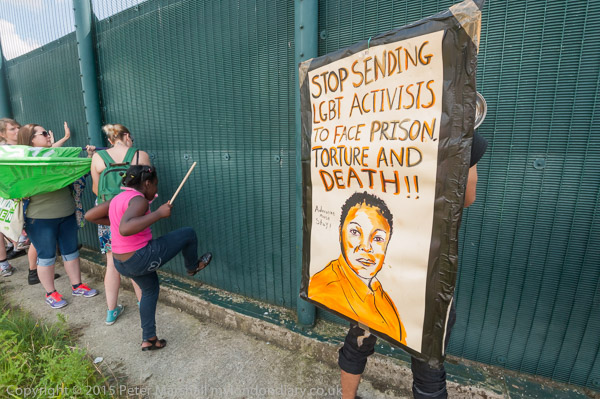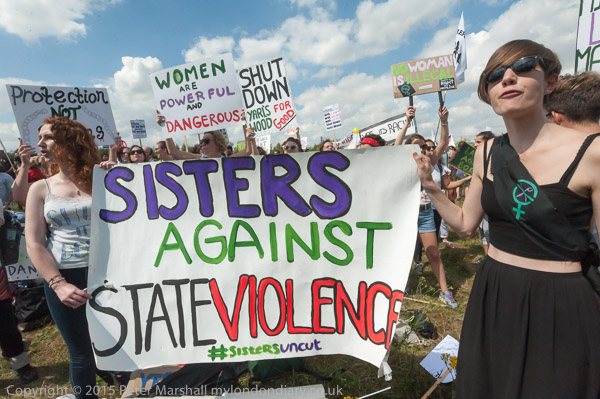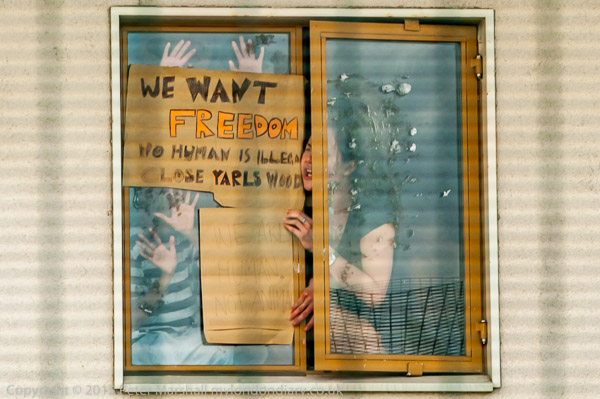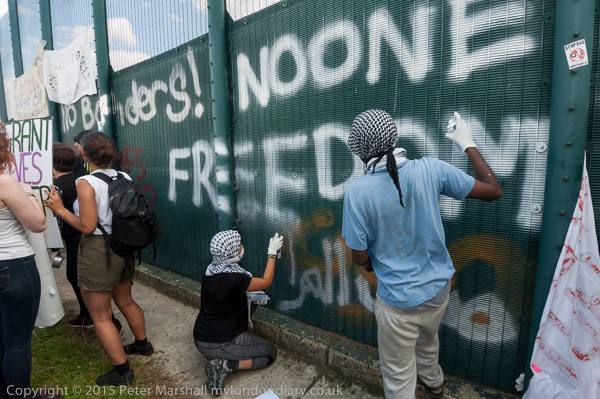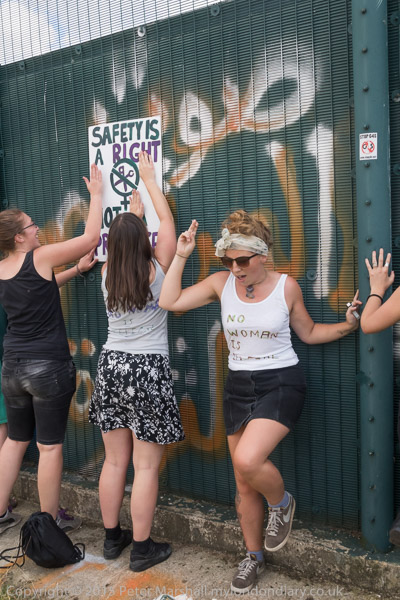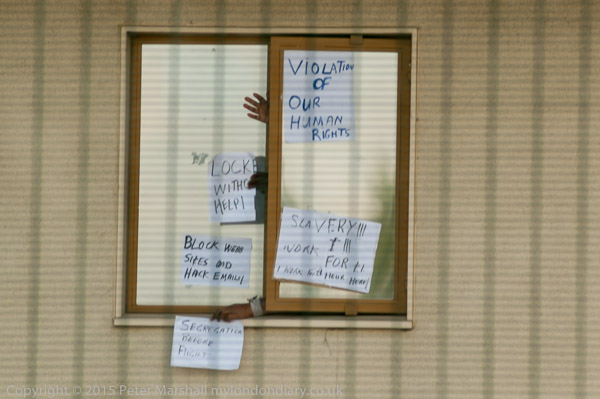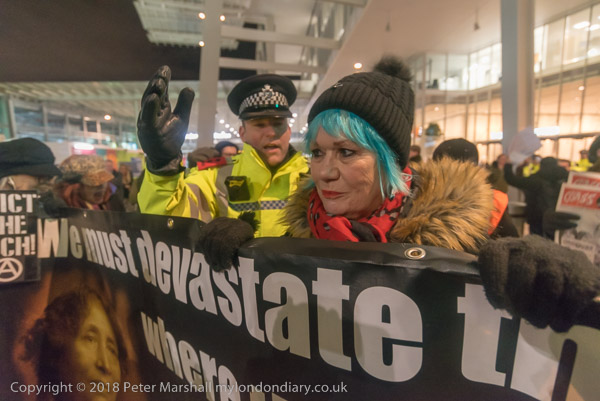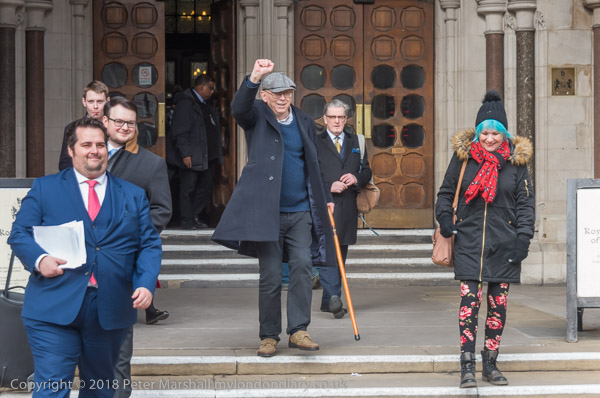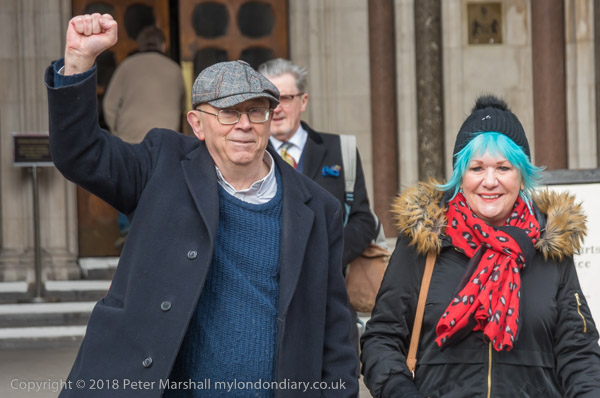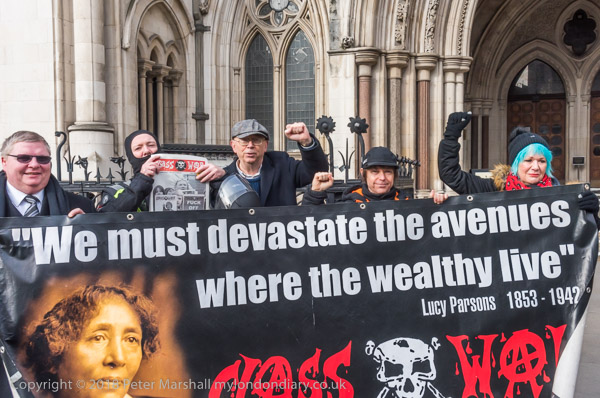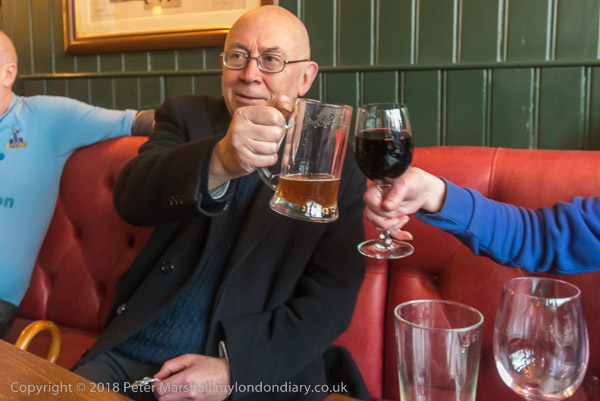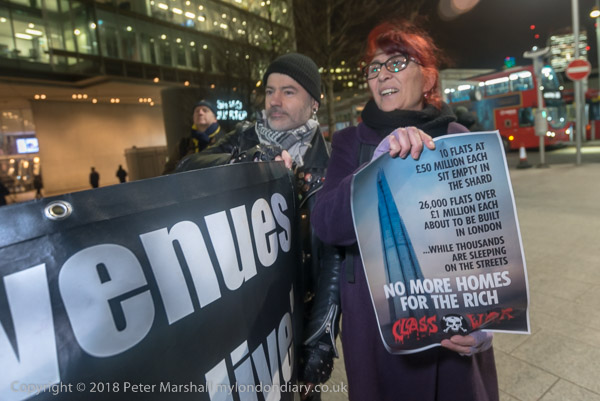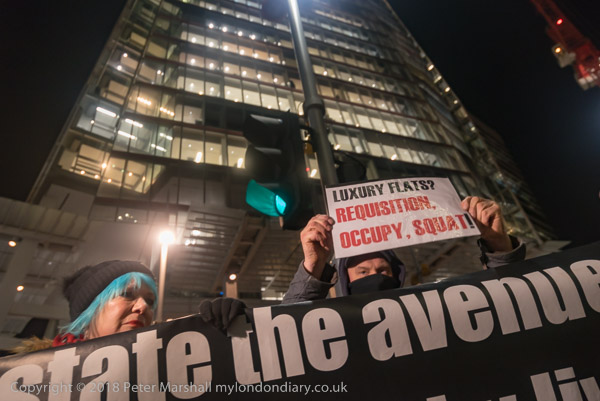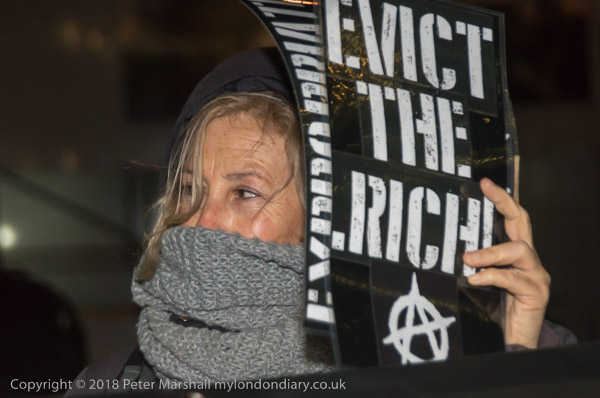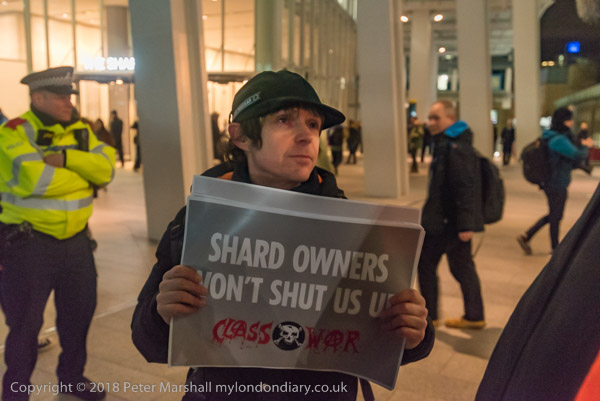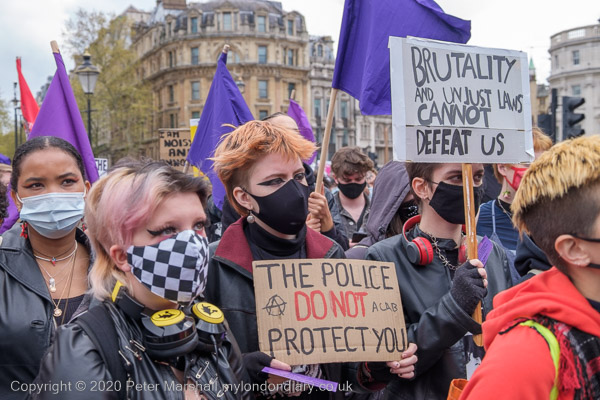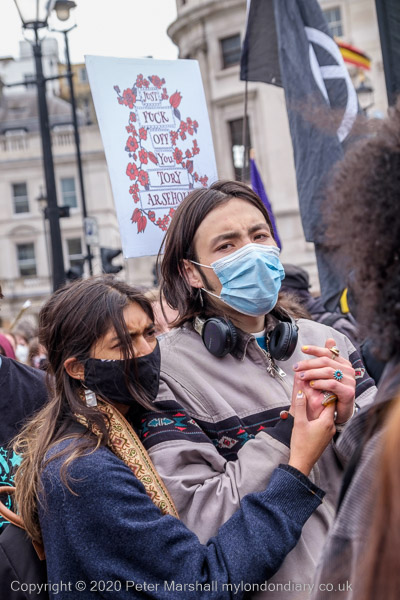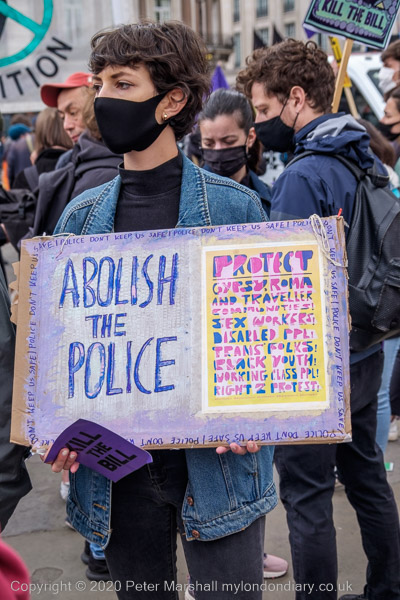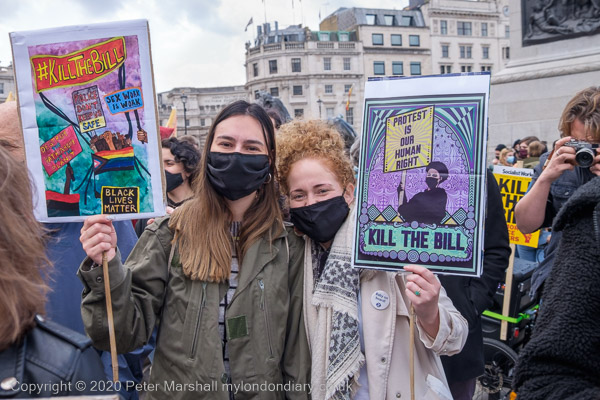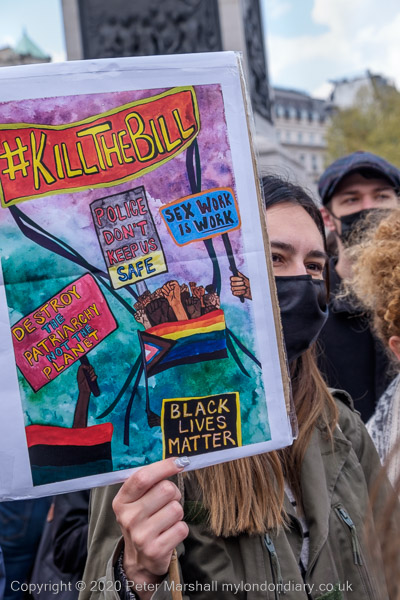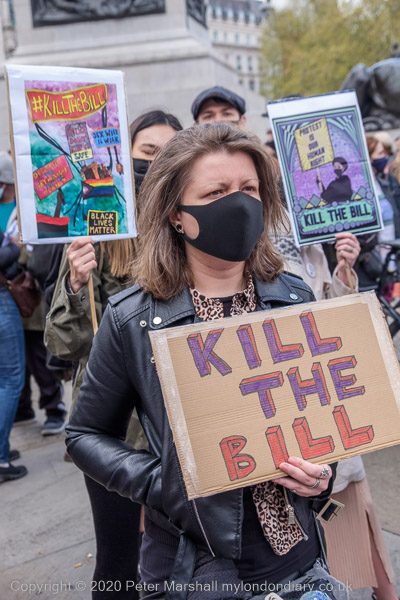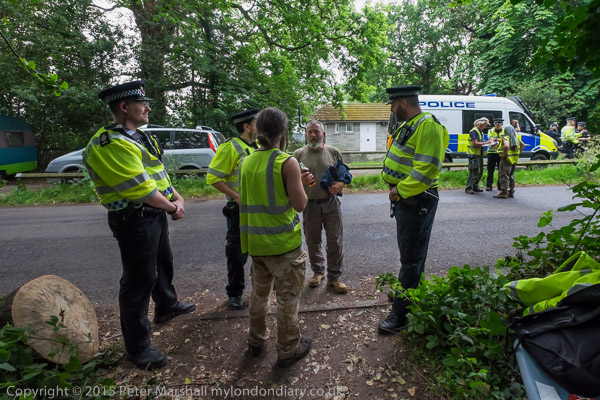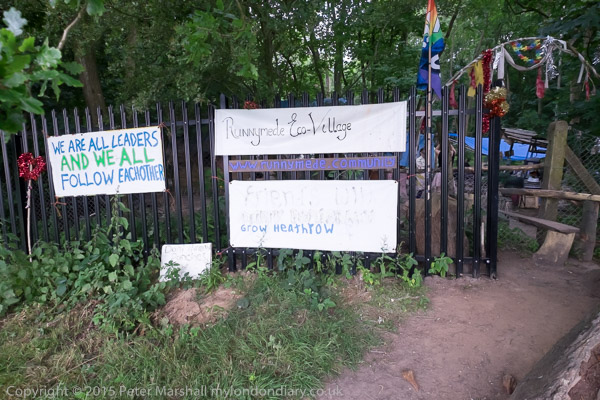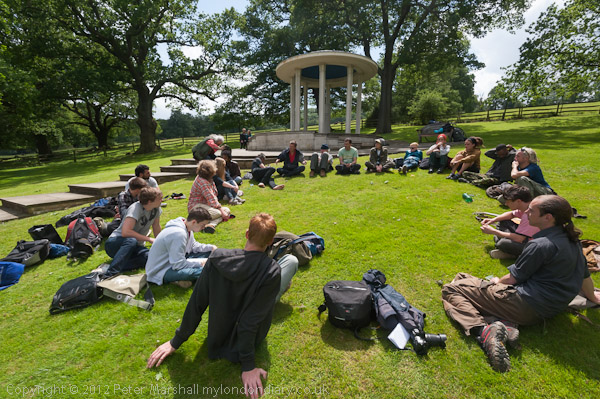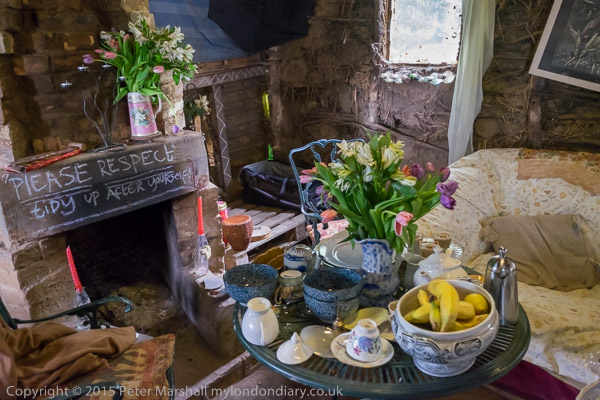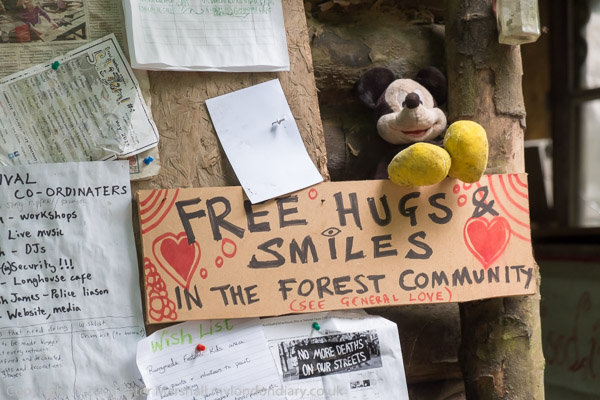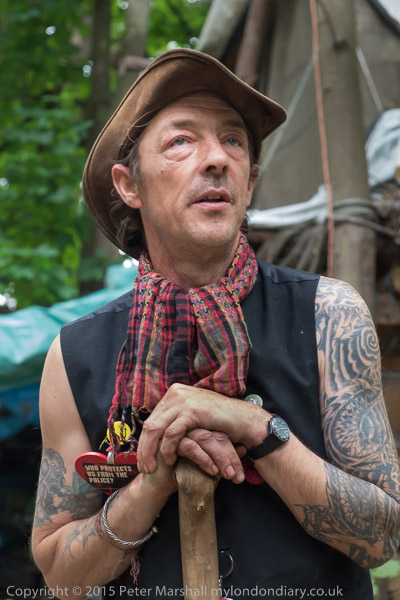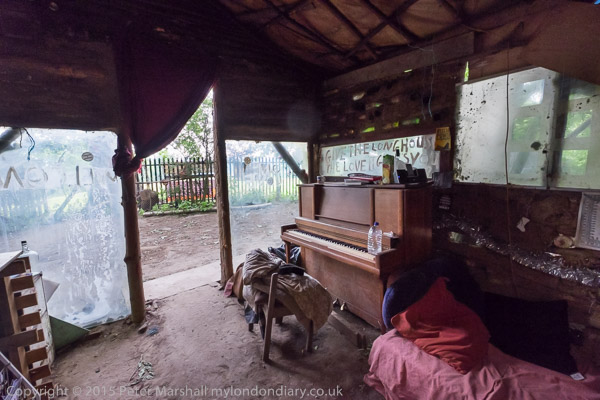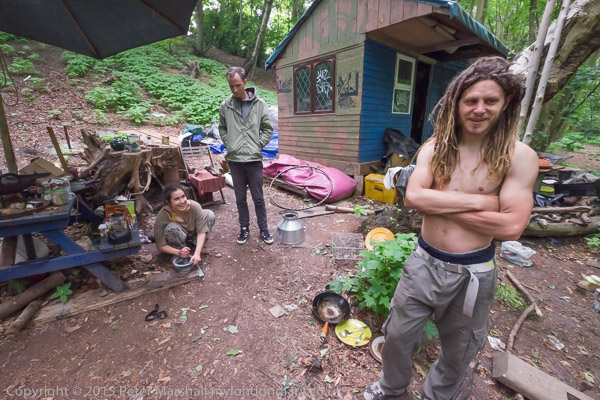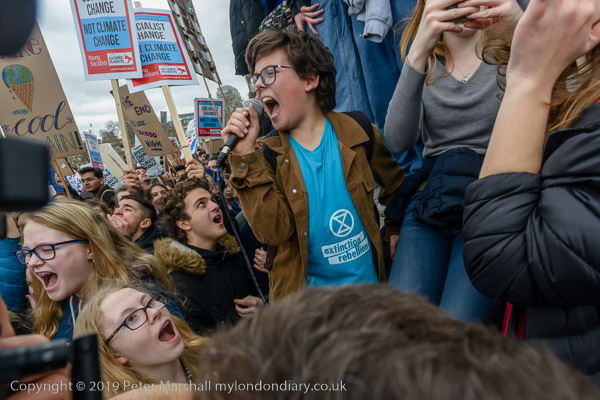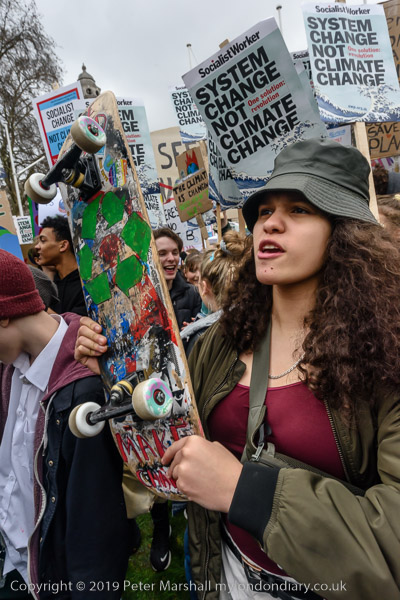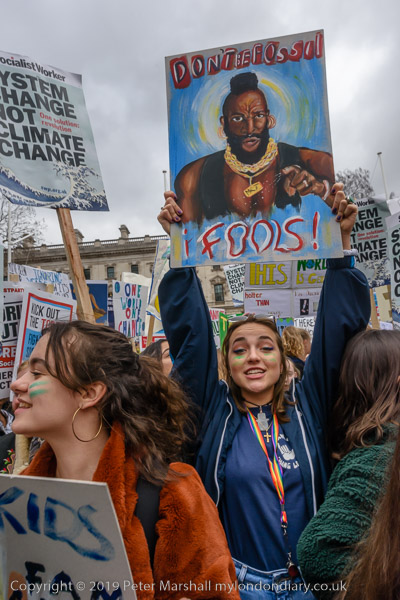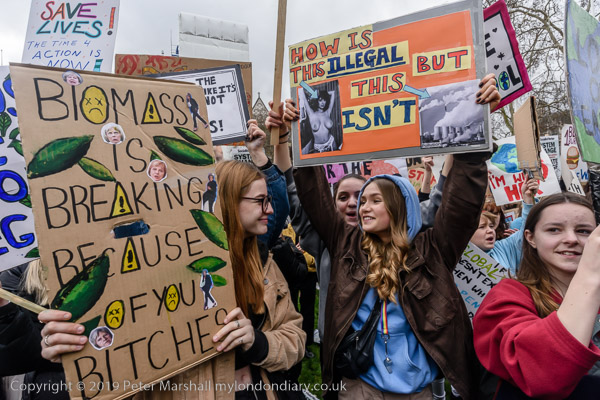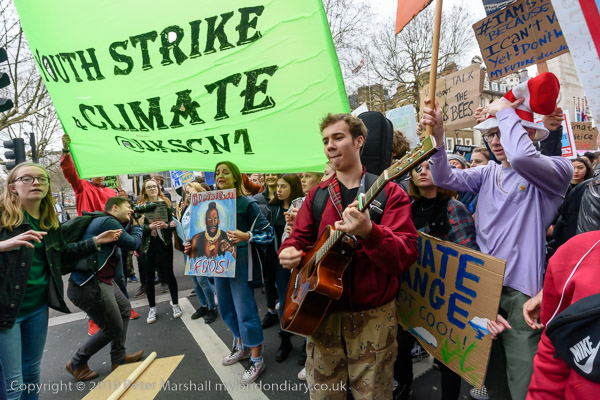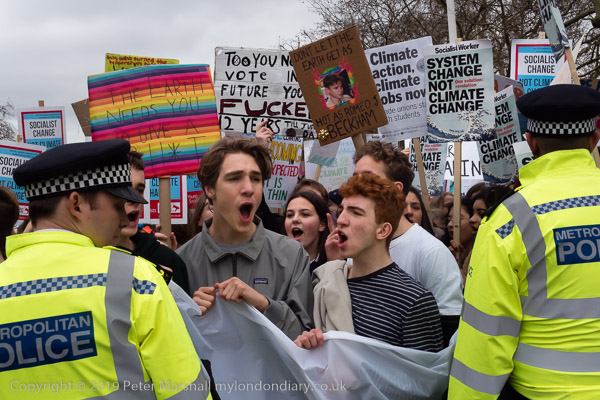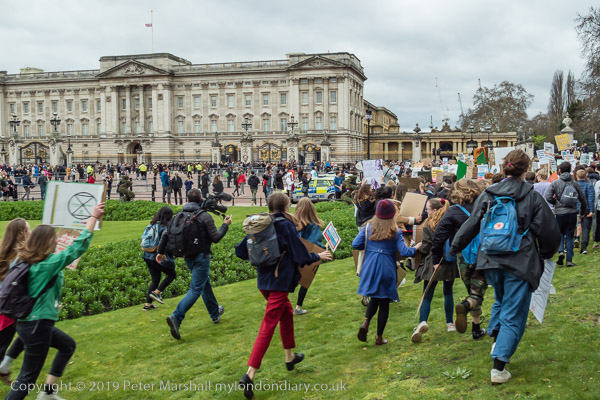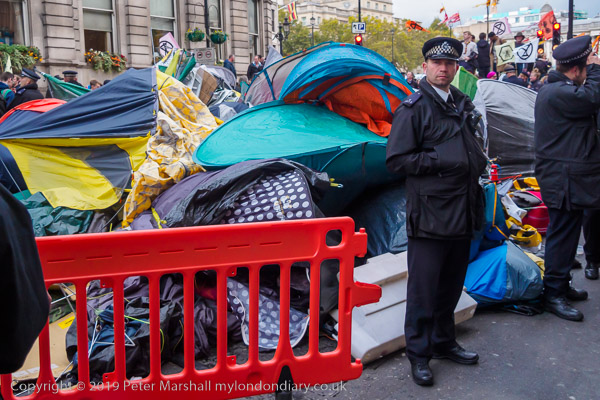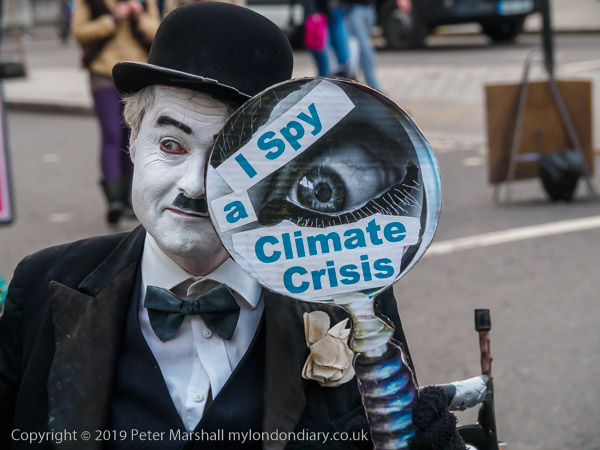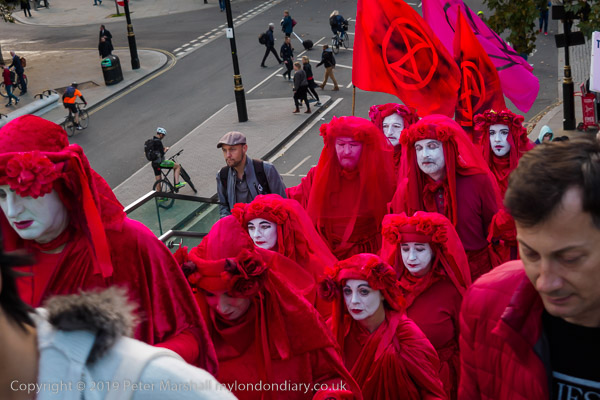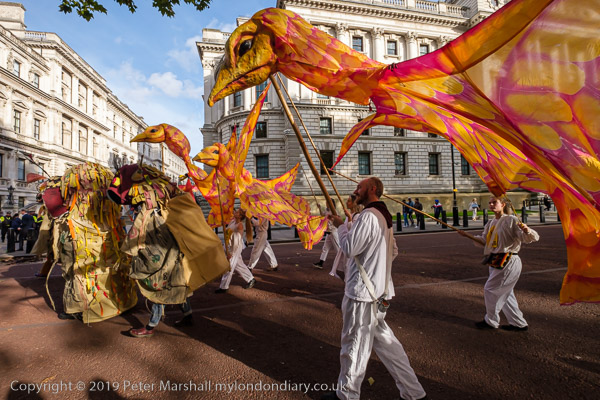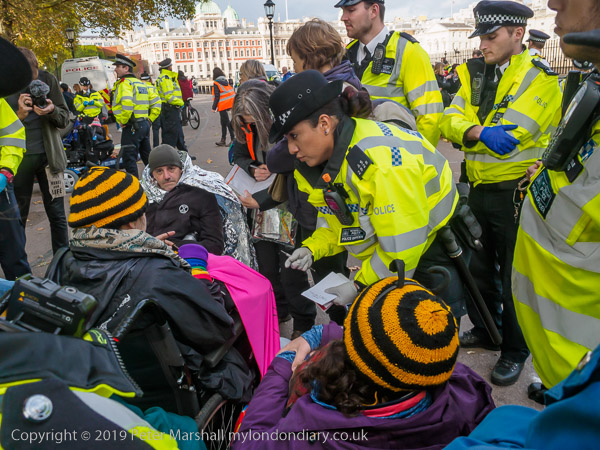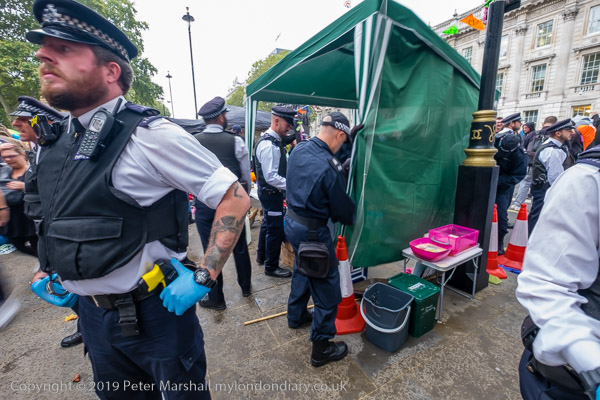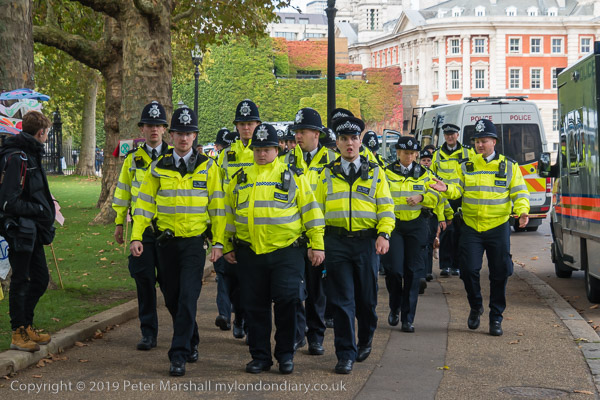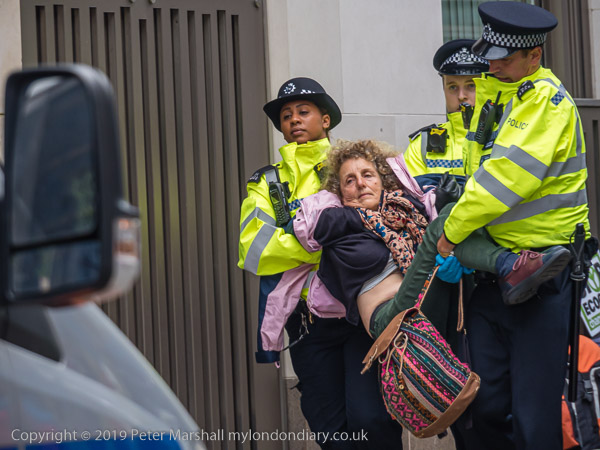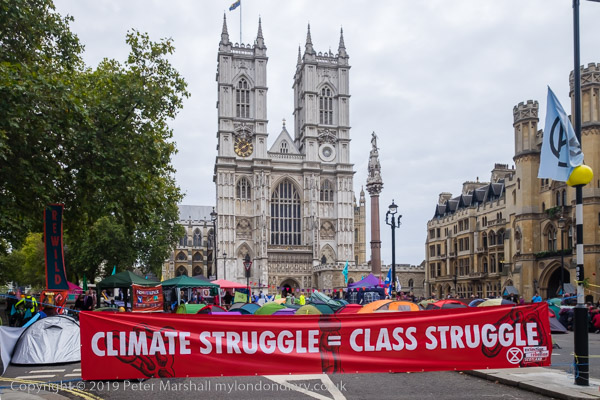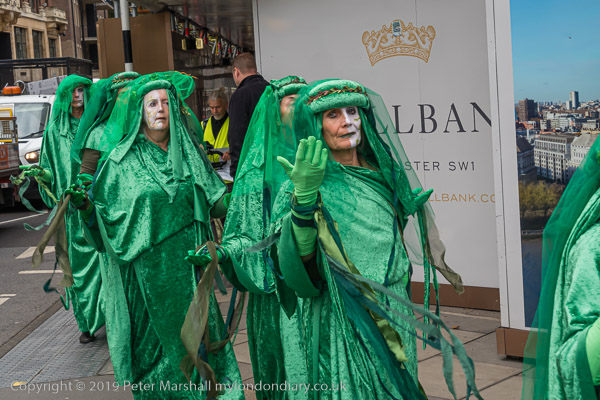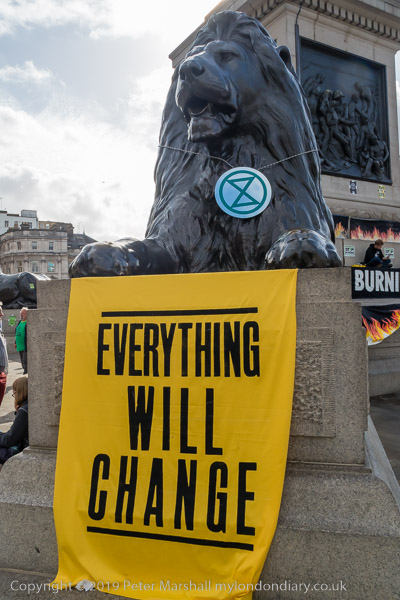Saturday April 17th 2010 was a long and varied day for me, travelling to various parts of London and making a couple of short walks as well as photographing three events.
New River & Harringay – Finsbury Park
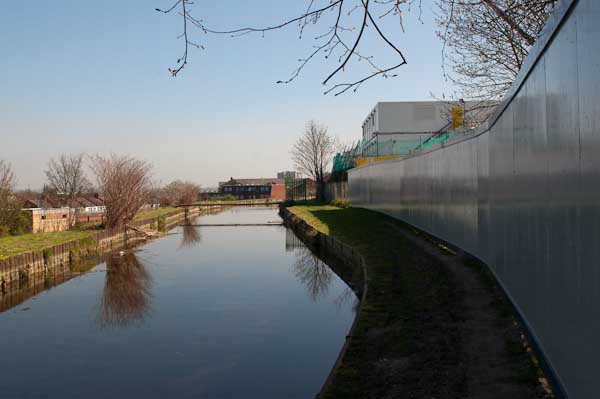
My journey across London had been rather faster than expected, probably because TfL’s Journey Planner had estimated rather longer times than I needed for connections, and I arrived at Harringay Green Lanes with rather a lot of time to spare.
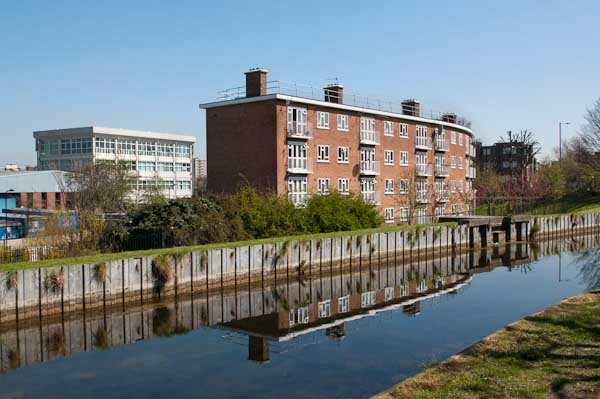
So I decided to walk around part of the area, walking partly along the New River, a water supply aqueduct opened in 1613 to bring water from Hertfordshire to London. It’s no longer New and was never a river.
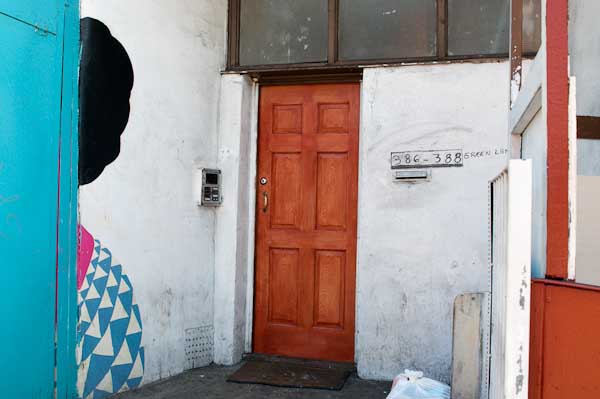
The light and sky was rather unusual. Like most of the Europe London was under a cloud of volcanic ash from the impossible to spell Eyjafjallajökull in Iceland, and no planes were flying. Thee sky had a slightly different blue to usual and lacked the con-trails and wispy clouds that these decay to and was a little dull from horizon to horizon. It wasn’t ideal for the panoramic views I made.
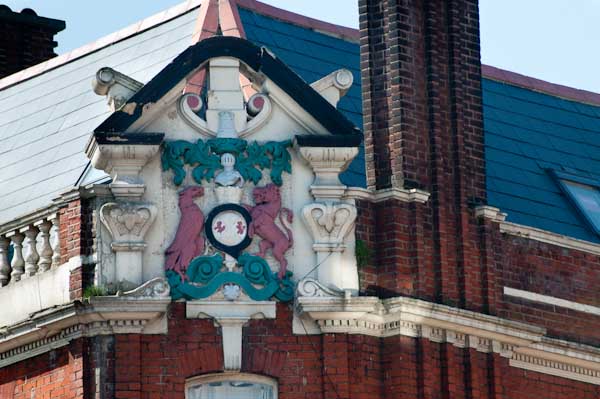
More at New River & Harringay.
Olympics and Nuclear Trains – Harringey
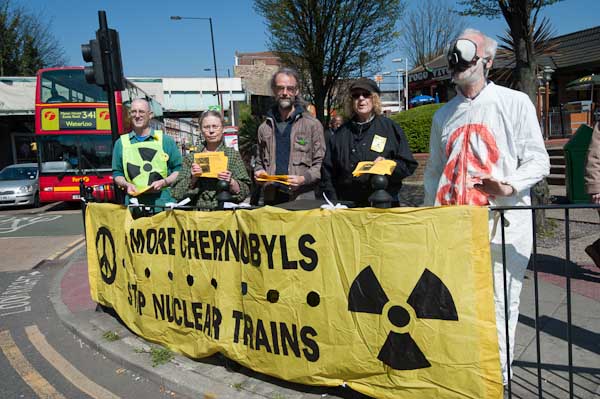
A few members of the Nuclear Trains Action Group and London CND were handing out leaflets close to the rail bridge on Green Lanes warning of the dangers of trains carrying highly toxic radioactive waste through densely populated North London. The event was given added moment by President Obama’s recent warning that nuclear terrorism is the gravest threat to global security.
Protesters had come to Haringey because nuclear waste from the power station at Sizewell is regularly shipped by rail on the line through here on its way to be reprocessed at Sellafield. Waste from Dungeness also travels through London, but on a route through the south and west of the city.
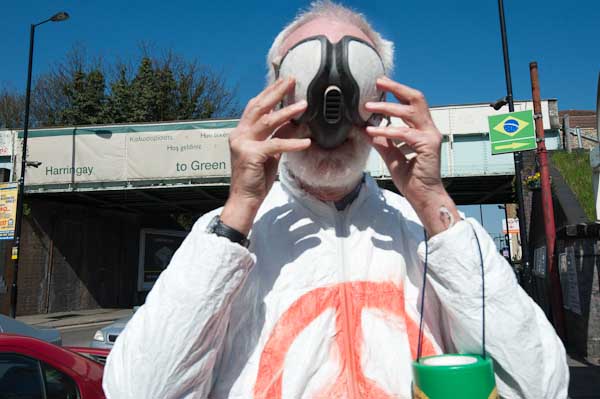
A terrorist attack on the trains carrying spent fuel rods could contaminate considerable areas of London with highly toxic materials and deaths could result. The protesters also pointed out that the route also goes past the Olympic site and an incident there would give the terrorists a huge amount of publicity.
Journalists had planted a fake bomb on one of these trains in London in 2006 to show the lack of real security and there has been no attempt to provide adequate security along the whole length of the route.
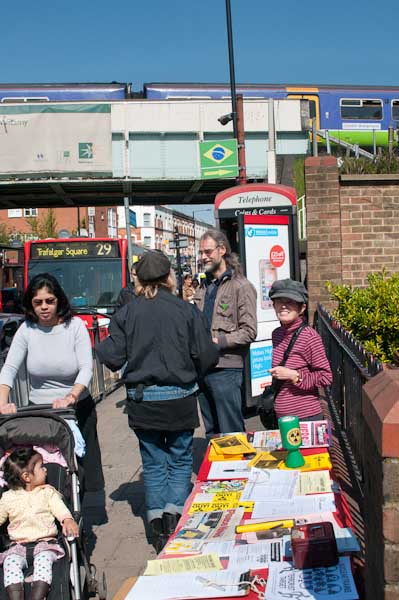
Transport by sea would be safer but would add significantly to the costs, and nuclear power is already hugely uneconomic when the full costs of decommissioning of power stations and safe long-term storage of wastes are included.
Wandsworth and the Wandle – Wandsworth
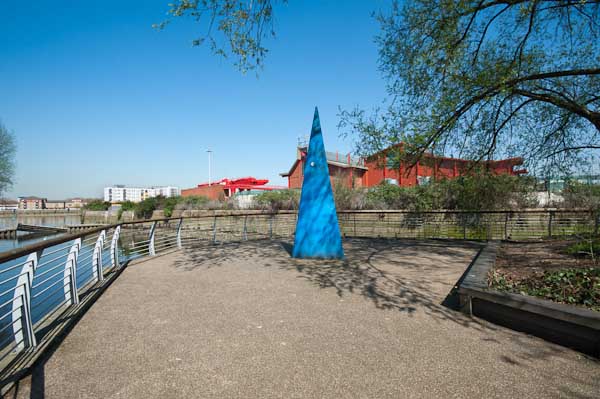
It hadn’t taken long to take a few pictures of the protesters in Haringey, and I still had rather a long time before my next event.
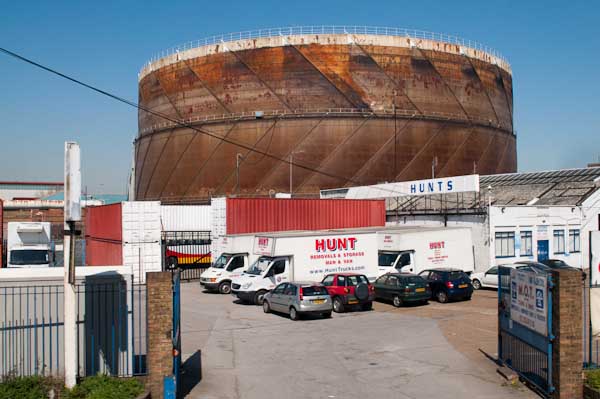
I’d heard that a new section of path had been opened by the Wandle close to where it enters the River Thames and planning my day I’d thought I would have time to take a look at it. It’s a longish journey from Haringey to Wandsworth, south of the river, but I had plenty of time to eat my sandwich lunch on the journey.
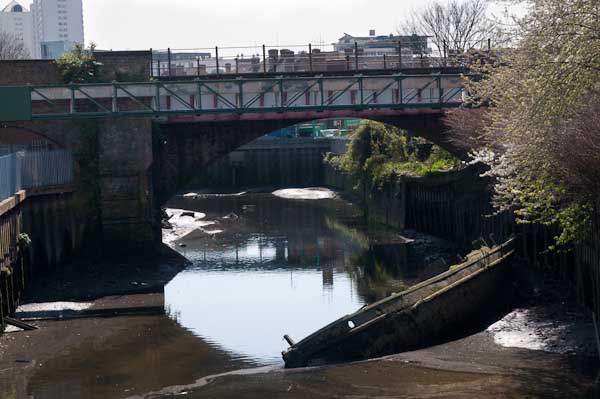
I was disappointed to find that although I could walk along the new section of ‘riverside’ path, it was still a short distance from both Wandle and Thames and these were still largely hidden from view by fences.
More at Wandsworth and the Wandle.
Loyal Orange Lodge London Parade – Westminster
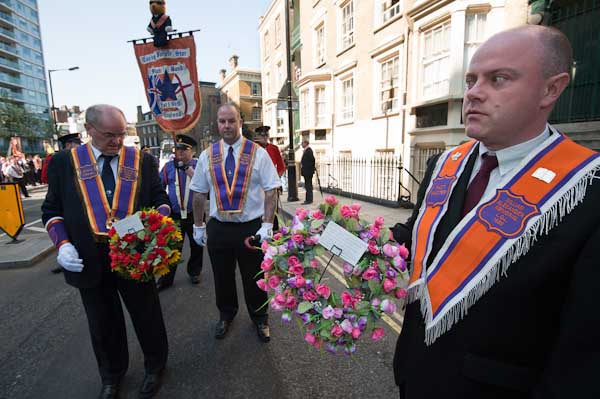
My next journey, to Clapham Junction and then Victoria was rather easier, and I arrived in time to photograph the members of the City of London District Orange Lodge and their guests as the prepared to march though central London on their St Georges Day Orange Parade.
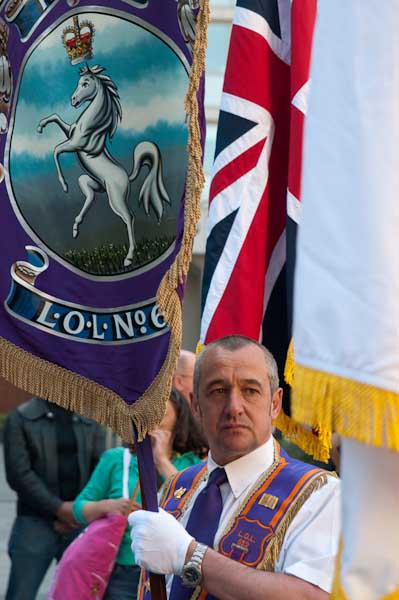
They were going to march to lay wreaths in memory of Crown Forces at the Cenotaph and then on to St James’s Square to lay another at the memorial to WPC Yvonne Fletcher, fatally wounded by a shot from the Libyan Embassy on 17 April 1984.
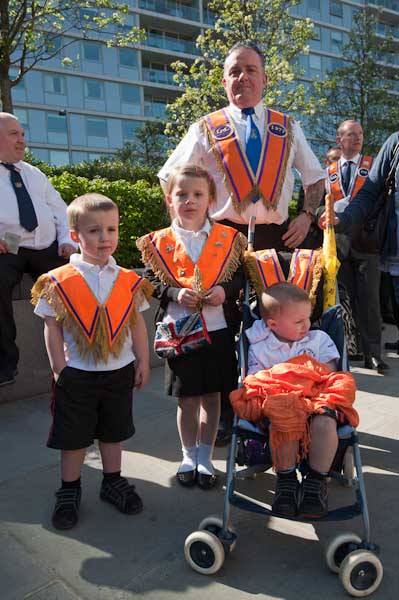
Among other groups taking part were the Corby Purple Star Flute Band and the Churchill Flute Band of Londonderry.
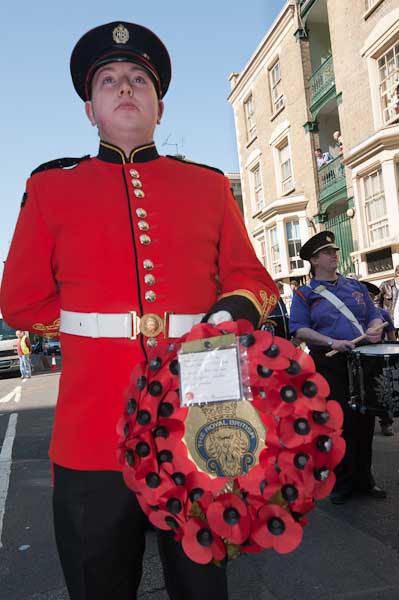
Even with progress towards peace continuing in Northern Ireland and now 25 years since the Good Friday Agreement, parades such as this are still contentious there. But in London they arouse little or no antipathy and are seen simply as a celebration of a particular Protestant culture.
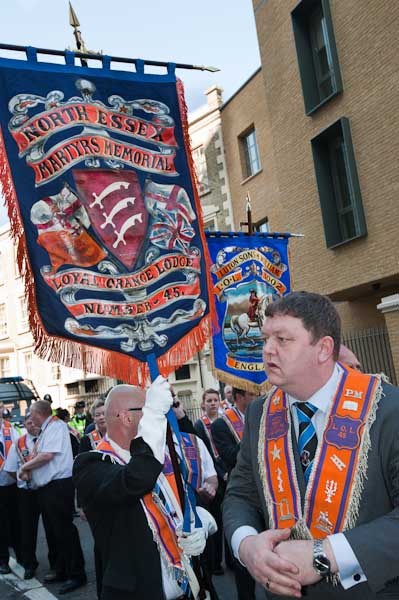
More pictures at Loyal Orange Lodge London Parade.
Release Syrian Political Prisoners – Syrian Embassy, Belgrave Square
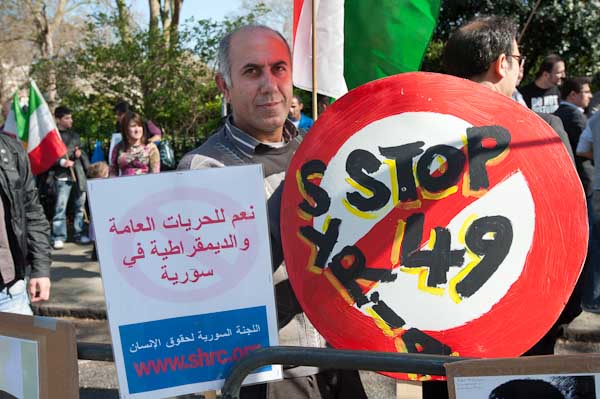
I left the Orange parade to make my way to the Syrian Embassy, where Kurds and others were protesting on the 64th anniversary of Syrian independence calling for the release of Kurdish prisoners of conscience held in Syrian jails.
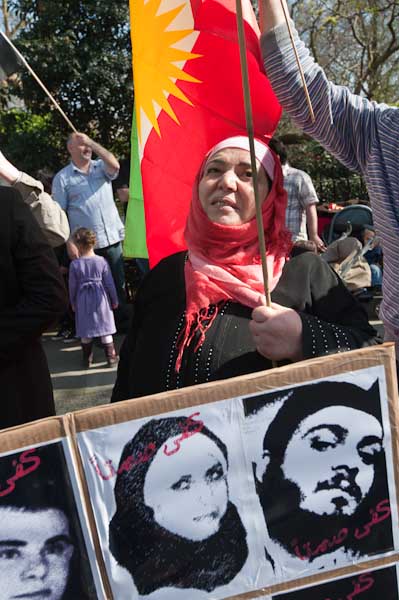
Similar demonstrations, organised by the International Support Kurds in Syria Association (SKS, based in the UK and founded in 2009) were taking place in Brussels, Canada, Switzerland, France and the USA.
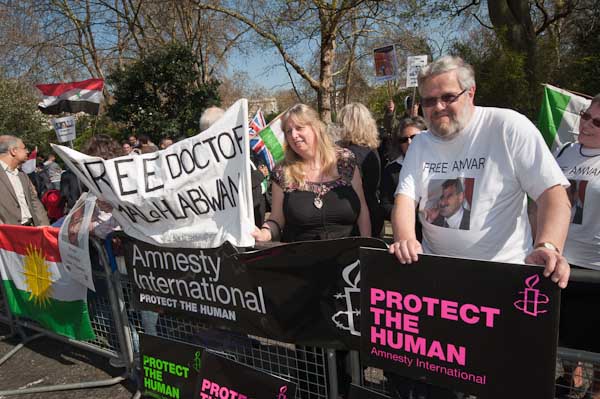
The protesters waved both Syrian and Kurdish flags – which are illegal in Syria – and called for the prisoners to be released and for the repeal of Decree 49. Introduced in September 2008, this controls the movement of people in the border area between Syria and Turkey where most Kurds live, and under it people there have to get a licence to build, rent or buy property.
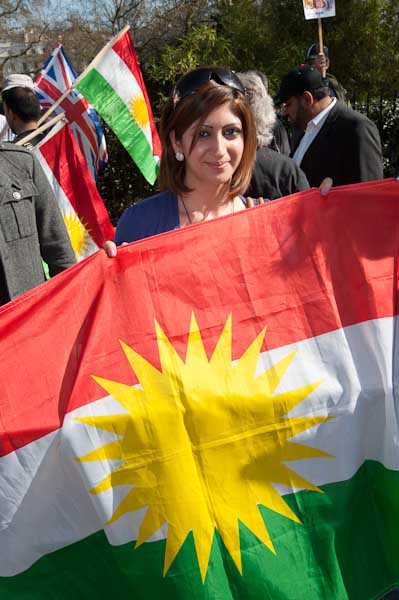
Around 1.7 million Kurds live in Syria and have been systematically denied their basic human rights for many years. In 1973, around 300 villages were confiscated and the land taken from around 100,000 Kurds and handed over to Arab farmers, with the names of Kurdish villages being changed into Arabic names.
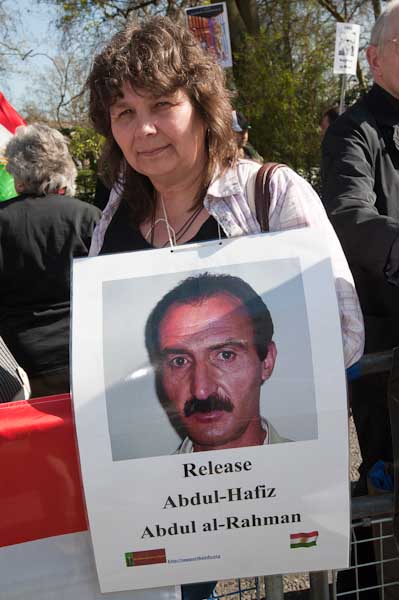
Emergency rule had been in force in Syria since 1963 and a 1962 law led to around 120,000 Kurds being stripped of Syrian nationality and becoming stateless. They are not allowed to move house, own land or businesses, are banned from many jobs, have no passports or other travel documents and their access to medical treatment is restricted.
Since the Syrian revolution of 2011, the largely Kurdish northeast of Syria has become the de-facto autonomous region of Rojava, adopting universal democratic, sustainable, autonomous pluralist, equal, and feminist policies.
More at Release Syrian Political Prisoners.
